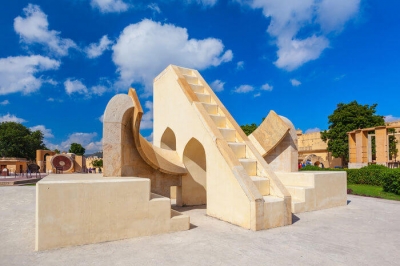
The Jantar Mantar in Jaipur, Rajasthan, comprising a collection of 19 architectural astronomical instruments, which the Rajput king Sawai Jai Singh II completed work on in 1734, and featuring the world’s largest stone sundial, was inscribed as a UNESCO Heritage Site.
It includes a set of some 20 main fixed instruments. They are monumental examples in masonry of known instruments but which in many cases have specific characteristics of their own. Designed for the observation of astronomical positions with the naked eye, they embody several architectural and instrumental innovations. This is the most significant, most comprehensive, and the best preserved of India’s historic observatories. It is an expression of the astronomical skills and cosmological concepts of the court of a scholarly prince at the end of the Mughal period.
On the culture front, three performing arts-Kerala’s Mudiyettu, West Bengal’s Chhau dance and Rajasthan’s Kalbelia (Rajasthan) made it to the UNESCO Intangible Heritage list.
Picture Credit : Google

